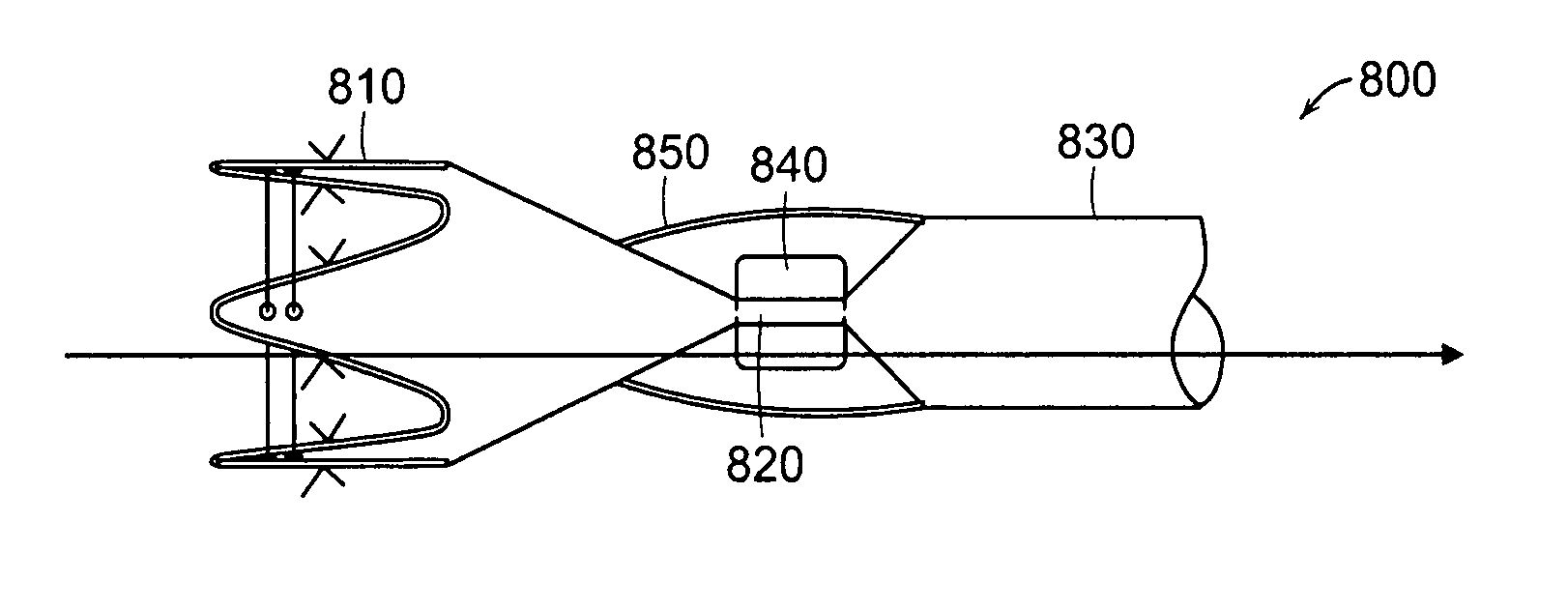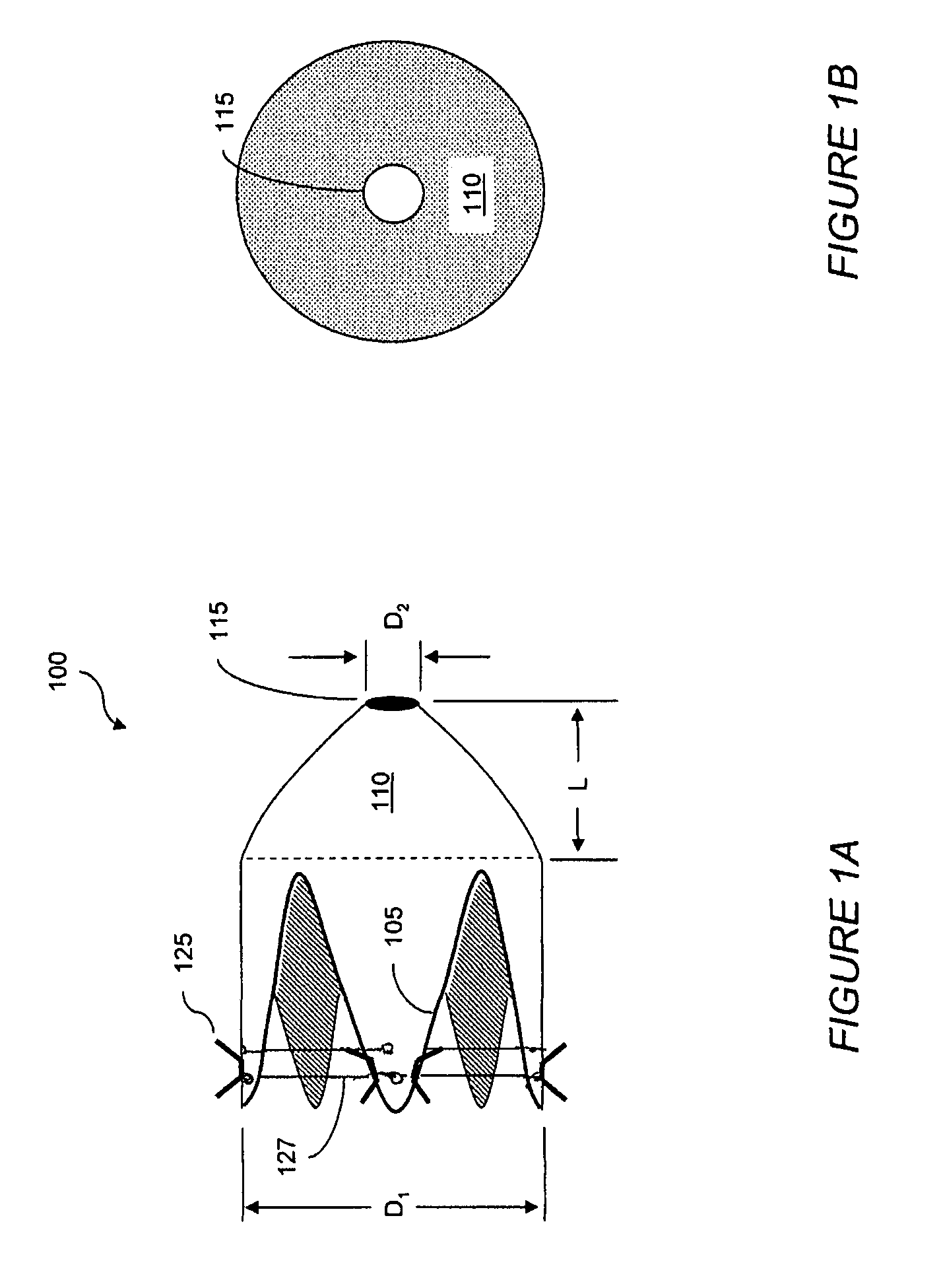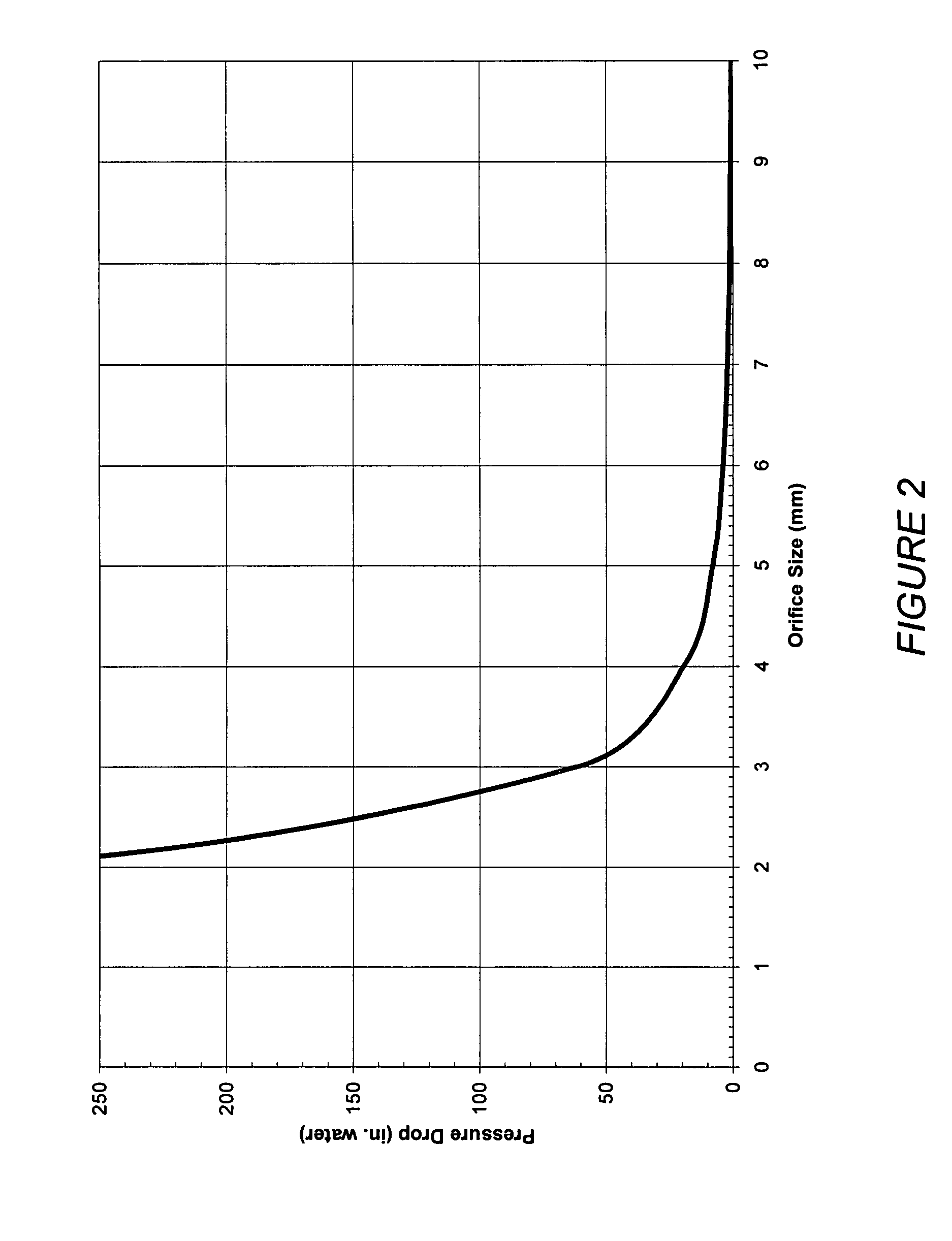Resistive anti-obesity devices
a technology of resistance and anti-obesity, applied in the field of resistance anti-obesity devices, can solve the problems of difficult anchoring of the stomach device, food consumption, etc., and achieve the effect of restricting the outflow of food
- Summary
- Abstract
- Description
- Claims
- Application Information
AI Technical Summary
Benefits of technology
Problems solved by technology
Method used
Image
Examples
Embodiment Construction
[0041]A description of preferred embodiments of the invention follows.
[0042]This general concept relates to providing an increased sense of satiety by slowing gastric emptying by providing resistance to the outflow of food from the stomach and through the intestines. An increased sense of satiety is obtained by slowing emptying of an animal's stomach. Gastric emptying can be slowed by providing resistance to the outflow of food, or chyme, from the stomach. In general, an animal perceives a sensation of satiety when the stomach fills. It is believed that by slowing gastric emptying into the duodenum, an animal can maintain a feeling of satiety for a longer period of time. Consequently, an animal no longer feeling hungry will tend to eat less.
[0043]A restrictor within the intestine slows the flow of gastric contents by creating an artificial, non-permanent narrowing in the gastrointestinal tract. Delayed emptying of chyme through the gastrointestinal tract will create both a premature...
PUM
 Login to View More
Login to View More Abstract
Description
Claims
Application Information
 Login to View More
Login to View More - R&D
- Intellectual Property
- Life Sciences
- Materials
- Tech Scout
- Unparalleled Data Quality
- Higher Quality Content
- 60% Fewer Hallucinations
Browse by: Latest US Patents, China's latest patents, Technical Efficacy Thesaurus, Application Domain, Technology Topic, Popular Technical Reports.
© 2025 PatSnap. All rights reserved.Legal|Privacy policy|Modern Slavery Act Transparency Statement|Sitemap|About US| Contact US: help@patsnap.com



